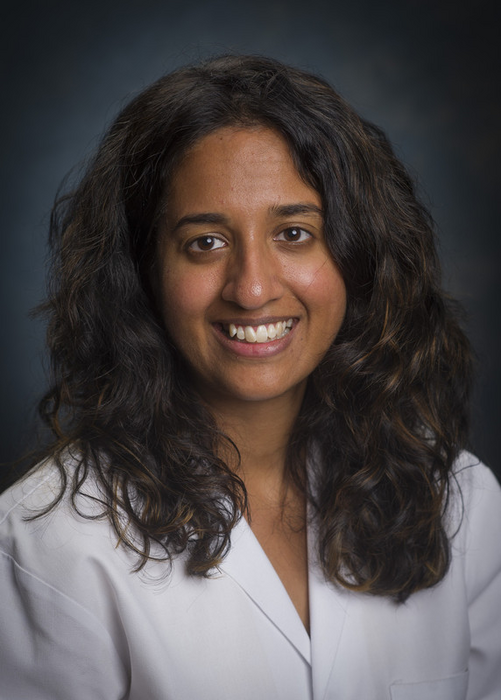![]()
 Frances Lund, Ph.D.Frances Lund, Ph.D., Charles H. McCauley professor in the Department of Microbiology and director of the Immunology Institute, and Anoma Nellore, M.D., associate professor in the Division of Infectious Diseases, are the latest winners of the Heersink School of Medicine's Featured Discovery. This initiative celebrates important research from Heersink faculty members.
Frances Lund, Ph.D.Frances Lund, Ph.D., Charles H. McCauley professor in the Department of Microbiology and director of the Immunology Institute, and Anoma Nellore, M.D., associate professor in the Division of Infectious Diseases, are the latest winners of the Heersink School of Medicine's Featured Discovery. This initiative celebrates important research from Heersink faculty members.
The study, "A transcriptionally distinct subset of influenza-specific effector memory B cells predicts long-lived antibody responses to vaccination in humans,” was published in Immunity.
“Our study introduces a new marker based on human flu-specific memory B cells,” said Nellore. “This marker indicates a sustained immune response triggered by vaccine-generated antibodies, safeguarding the health of the individual. Remarkably, this marker can be detected as soon as seven days after vaccination, offering a potential indicator of immune protection from the disease.”
The Heersink communications staff sat with Drs. Lund and Nellore to gain insight into this study, UAB, and the science community.
What compelled you to pursue this research?
Lund: Our research group focuses on uncovering the essential elements that trigger immune memory. This encompasses the enduring immune memory cells situated within tissues and the persistent cells responsible for generating circulating antibodies. Our goal is to comprehend the mechanisms behind their extended lifespans, enabling us to eventually create more resilient vaccines that foster the establishment and preservation of these memory populations. Furthermore, we aspire to develop treatments that selectively target these cells in autoimmune disorders where these memory B cells and antibodies can have harmful effects.
What was your most unexpected finding?
Nellore: It has been known for many years that the memory B cell compartment is heterogeneous and includes cells that “look” phenotypically different. It’s also well-established that the cells are transcriptionally heterogeneous. However, no one had explored whether these phenotypic and transcriptional differences translated to distinct functional properties. Remarkably, our study revealed that the effector memory B cell population exhibited phenotypic, transcriptional, and epigenetic differences that translated into distinct functional attributes that could be measured and tracked experimentally.
 Anoma Nellore, M.D.What is your research’s relevance to human disease?
Anoma Nellore, M.D.What is your research’s relevance to human disease?
Nellore: This work was performed using blood samples from healthy individuals who received their annual influenza vaccine. The knowledge gained from this study will help us better understand how the immune system responds to vaccines and may, in the future, allow us to enhance this response to improve vaccines. In addition, since the effector B cell population that we characterized can be measured in the blood within one week of flu vaccination, this population could, in the future, serve as a useful early tool to predict whether the vaccine response will be durable.
When did you know you had an important discovery?
Lund: The first analysis showed that this novel population of flu-specific memory B cells could be easily detected in blood on day seven post-vaccination and was positively associated with the magnitude of the antibody response to the vaccine four months later. Until now, no early surrogates existed for whether a seasonal influenza vaccine will elicit a durable antibody response. Thus, we typically wait months after vaccination to determine whether a vaccine is likely effective. Our dataset suggests that it may be possible to evaluate new vaccines earlier and to design new vaccines that can induce this population of cells.
What do you find makes the science community here unique?
Lund: I am a fundamental researcher, which indicates that my lab focuses on understanding the fundamental mechanisms governing immune system reactions to vaccines, pathogens, self-antigens, and transplant antigens. Notably, an exceptional characteristic of the research environment at UAB is its emphasis on nurturing and enabling partnerships between fundamental researchers, such as myself, and researchers like Anoma, who have significant clinical expertise to help sharpen research questions toward translational applications. This seamless interchange between basic and translational researchers allows us to collectively tackle fundamental immunological inquiries within human health and disease of particular clinical and translational relevance.
Nellore: I have yet to come across any barriers to collaboration within the scientific community at UAB. Every individual is readily available to offer assistance, whether supplying reagents, exchanging protocols, or aiding with data analysis; this aspect is exceptionally distinct.